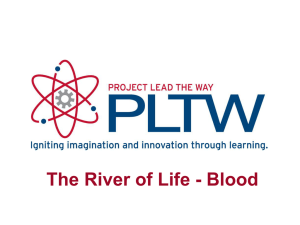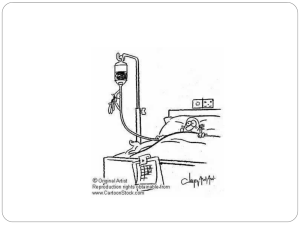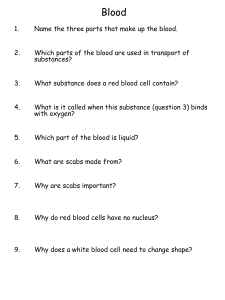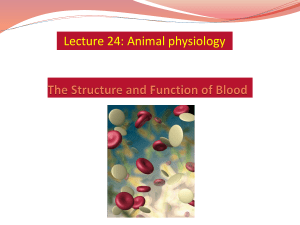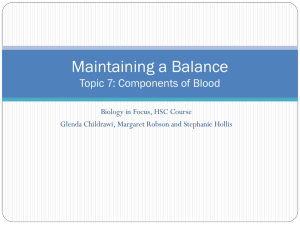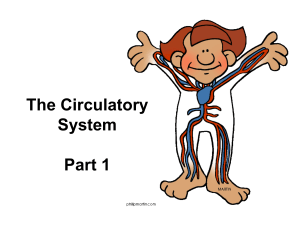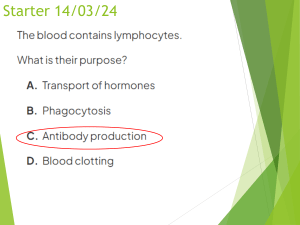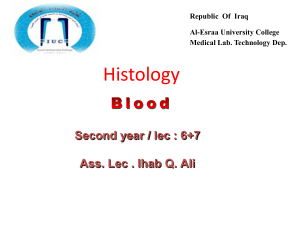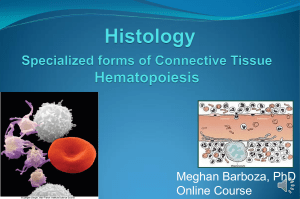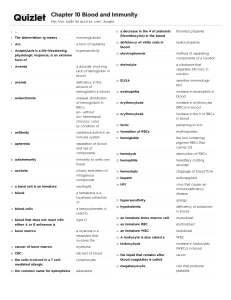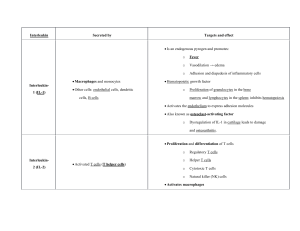3.2.3 Blood Cells (Extended Study) HL only
advertisement
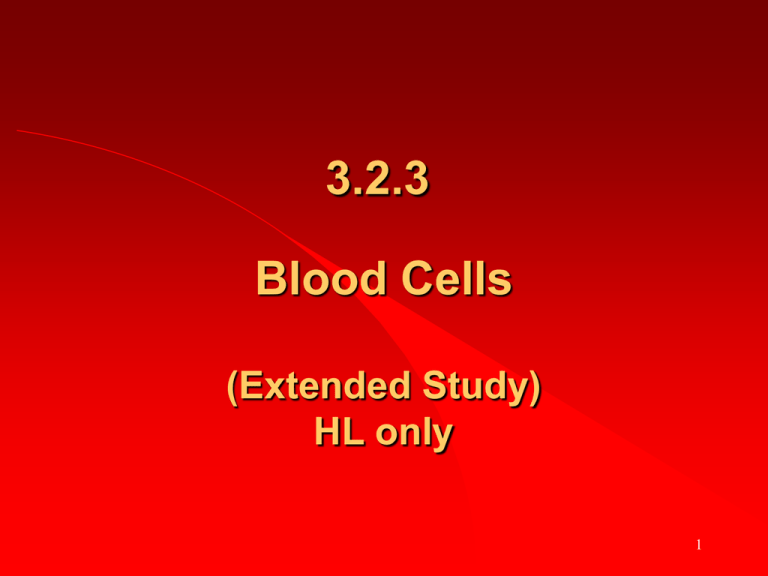
3.2.3 Blood Cells (Extended Study) HL only 1 First revise 3.2.2 (Basic details about blood and blood cells) HL & OL 2 Learning objectives 1. Details of red blood cell structure &function 2. Details of two types of white blood cells (a) Lymphocytes (b) Monocytes Composition of Blood Plasma Red Blood Cells White Blood Cells Platelets Liquid part of the blood Functions of blood parts Plasma Composed of mainly water which acts as a transport medium for the cells and dissolved substances Red Blood Cells Carry Oxygen White Blood Cells Fight Infection Platelets Clotting Red Blood Cells Biconcave discs ……gives large surface area No Nucleus No mitochondria Contain Haemoglobin…(has a high affinity for oxygen) Flexible Cell membranes Made in bone marrow of ribs & sternum White Blood Cells Have a Nucleus No definite shape Formed in bone marrow and mature in spleen Protect against disease Two types 1. Lymphocytes Produce antibodies 2. Monocytes Engulf microorganisms PLATELETS Cell fragments No nucleus Made in bone marrow Function in clotting Plasma Composed of mainly water which as a transport medium for the cells and dissolved substances Dissolved substances include Digestion products ….Glucose, amno acids, Fatty acids, glycerol, minerals and vitamins Waste….Carbon dioxide, urea Hormones….eg Insulin Antibodies Learning check 1. List four ways, other than colour, in which red blood cells are different from ordinary body cells 2. Name the chemical in red blood cells that has a high affinity for oxygen 3. Name two types of white blood cells and give the function of each type See also Section 3.2.2 Organisational Complexity of the Human for introduction to Blood and ciriculation End

